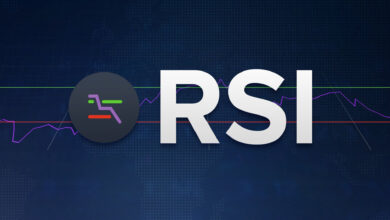How to Build Custom Technical Indicators for Crypto Trading

The Ultimate Guide to Creating and Using Technical Indicators for Crypto Investing
Introduction
Technical indicators are essential tools for crypto investors. They transform raw price and volume data into actionable insights — helping traders understand trends, momentum, volatility, and potential reversals. In this guide, we’ll walk through what technical indicators are, how they work, and how you can use or create custom indicators to optimize your crypto strategies.
🔗 Related: Learn how to create a profitable crypto trading strategy
What Are Technical Indicators?
Technical indicators are mathematical formulas applied to market data (such as price, volume, or open interest) to produce signals that guide investment decisions. They fall into categories like:
Trend indicators: Help determine the direction of the market (e.g., Moving Averages).
Momentum indicators: Measure the speed of price changes (e.g., RSI, MACD).
Volatility indicators: Show how much price moves in a given time (e.g., Bollinger Bands).
Volume indicators: Analyze trading volume to confirm price trends (e.g., OBV).
Top Indicators Every Crypto Investor Should Know
1. Moving Averages (MA)
Moving averages smooth out price action and help identify trends.
Simple Moving Average (SMA): Average of closing prices over a period.
Exponential Moving Average (EMA): Gives more weight to recent data.
✅ Use for: Trend confirmation and dynamic support/resistance.
🔗 Related: What is a Moving Average Indicator?
2. Relative Strength Index (RSI)
RSI measures the magnitude of recent price changes to evaluate overbought or oversold conditions.
Value above 70 = Overbought
Value below 30 = Oversold
✅ Use for: Spotting reversal points and entry signals.
🔗 Related: What is the RSI Indicator?
3. MACD (Moving Average Convergence Divergence)
MACD uses two EMAs to generate buy/sell signals.
Signal line crossovers indicate shifts in momentum.
Histogram shows the strength of the signal.
✅ Use for: Trend changes and momentum confirmation.
4. Bollinger Bands
Bollinger Bands consist of a moving average and two standard deviation bands above and below.
Prices nearing the upper band may be overbought.
Prices nearing the lower band may be oversold.
✅ Use for: Volatility analysis and breakout detection.
5. On-Balance Volume (OBV)
OBV tracks cumulative volume to detect accumulation or distribution trends.
Rising OBV with rising prices = confirmation.
Divergence between OBV and price = possible reversal.
✅ Use for: Validating trends using volume.
Creating Custom Crypto Indicators
Advanced investors may want to create their own indicators. Here’s how:
Define Your Objective: What behavior are you trying to detect (e.g., trend strength, breakout risk)?
Choose Inputs: Use price, volume, or even external data (social sentiment, on-chain metrics).
Apply Math/Logic: Use formulas or statistical models (e.g., z-scores, ratios).
Backtest & Optimize: Always test your indicator across different market conditions.
Visualize: Plot the indicator with your charts and test integration with your trading system.
🔗 Related: Role of Machine Learning in Backtesting and Optimization
Best Practices When Using Indicators
Combine indicators for confirmation (e.g., RSI + MA)
Avoid overfitting — too many indicators can create conflicting signals.
Use indicators alongside fundamental and sentiment analysis.
Regularly test performance as market behavior evolves.
Internal Tools That Help
Fortuna AI Assistant gives investors:
Automated technical analysis overlays
Custom indicator creation tools
Backtesting environment with Trust Score integration
These features help you go beyond standard indicators and develop unique signals aligned with your strategy.
Conclusion
Mastering technical indicators can transform your crypto investing — helping you trade with more confidence, precision, and discipline. Whether using simple tools like RSI or building your own formulas, indicators offer critical insights for navigating volatile crypto markets.
✅ Explore more: How to Optimize Your Crypto Backtesting | Maximizing Crypto Strategies with AI
Rating of this post
Rate
If you enjoyed this article, please rate it.
FAQs
Moving Averages and RSI are great starting points. They're simple, widely used, and offer reliable signals.
Yes. AI can detect complex patterns, optimize parameters, and even generate new predictive indicators.
2–3 complementary indicators are usually enough. More than that can create noise.
Use a backtesting platform with historical crypto data — Fortuna’s platform includes this functionality with real-time strategy feedback.
No. Some work best in trending markets, others in ranges. Always understand their limitations and confirm with other tools.
Rating of this post
Rate
If you enjoyed this article, please rate it.



